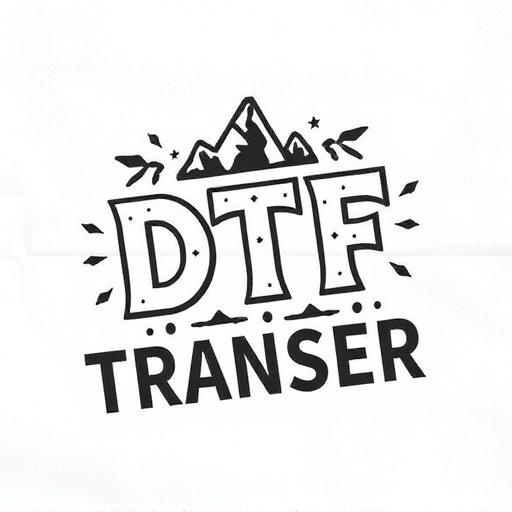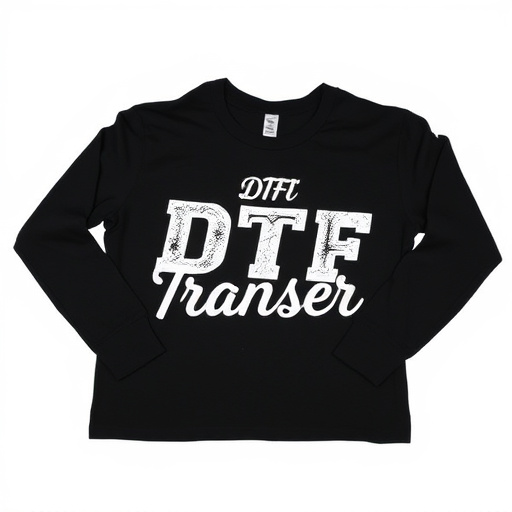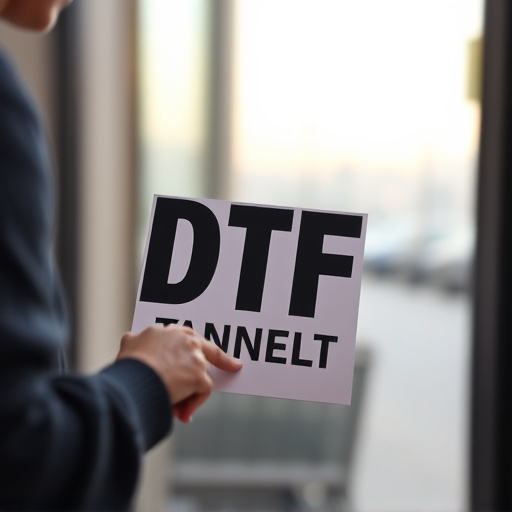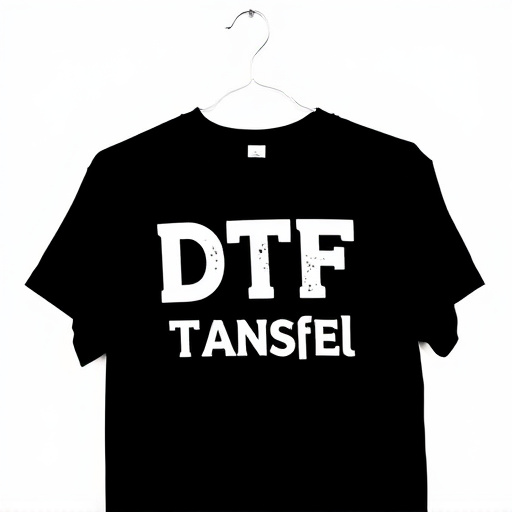Direct to Fabric (DTF) transfer technology is a game-changer in textile printing, offering high-quality, vibrant prints on specialty clothing. This method uses heat application to directly transfer inks to fabric, creating permanent designs that withstand multiple washes. Ideal for personalized apparel, DTF printing allows for precise application of intricate patterns and supports various fabric types and colors. Best practices include selecting compatible inks and papers, careful printing and heat pressing, proper curing, and considering wash cycles for long-lasting prints. The fashion industry embraces DTF transfers for their versatility and high-quality results in custom garments and limited-edition collections.
“Discover the revolutionary world of DTF Transfer technology and its profound impact on specialty clothing. This comprehensive guide explores the ins and outs of DTF Printing, offering a beginner’s understanding of this innovative process. From its advantages for custom apparel to the art of selecting the perfect DTF Print, we delve into every step. Learn from real-world applications in the fashion industry through captivating case studies. Enhance your knowledge and unlock the potential of long-lasting DTF Prints with our expert best practices.”
- Understanding DTF Transfer Technology: A Beginner's Guide
- Advantages of Using DTF for Specialty Clothing Applications
- Choosing the Right DTF Print for Your Fabric and Design
- The Process: From Design to Final DTF Print on Clothing
- Best Practices for Long-Lasting DTF Prints on Clothing Items
- Case Studies: Successful Implementations of DTF Transfers in Fashion
Understanding DTF Transfer Technology: A Beginner's Guide

DTF Transfer Technology, or Direct-to-Fabric (DTF) Transfer, is a revolutionary process in the world of textile printing and customization. This modern technique allows for intricate designs to be seamlessly integrated onto various specialty clothing items. The DTF method involves transferring print inks directly onto the fabric’s surface, enabling vibrant and durable DTF prints. Unlike traditional printing methods that may require multiple layers or special coatings, DTF offers a straightforward and efficient solution.
For beginners, understanding the process is as simple as knowing that it combines elements of both digital design and heat application. Designers create artwork using specialized software, which is then precisely transferred onto the fabric using heated presses. This technology ensures that the print adheres permanently to the fabric, making it an ideal choice for creating unique, personalized clothing pieces. Whether you’re looking to add logos, graphics, or custom text, DTF Transfer offers a versatile and high-quality printing solution for specialty apparel.
Advantages of Using DTF for Specialty Clothing Applications

Using Direct to Fabric (DTF) transfers for specialty clothing applications offers numerous advantages over traditional printing methods. DTF allows for high-quality, vibrant prints on a wide range of fabrics and colors, ensuring that designs pop and maintain their richness even after multiple washes. This technology is particularly beneficial for creating custom, personalized garments, as it facilitates precise application of intricate patterns and detailed graphics directly onto the fabric surface.
Moreover, DTF transfers are fast and efficient, making them ideal for small batch production or even one-off creations. They eliminate the need for costly set-up times associated with traditional printing, allowing designers and manufacturers to quickly adapt to changing trends and customer preferences. Additionally, DTF prints are durable, resistant to fading, and suitable for various fabric types, ensuring that specialty clothing items retain their aesthetic appeal and structural integrity even under demanding conditions.
Choosing the Right DTF Print for Your Fabric and Design

When selecting a DTF (Direct-to-Fabric) transfer for your specialty clothing items, understanding the fabric and design is key. Different fabrics have unique characteristics that impact how DTF prints adhere and appear. For instance, natural fibers like cotton absorb inks better than synthetic materials like polyester. Therefore, choosing a DTF transfer compatible with your fabric ensures long-lasting, vibrant prints.
Design complexity also plays a role. Simple, solid-color designs typically require fewer printing steps and deliver consistent results on various fabrics. Detailed, intricate patterns, however, demand precision printing techniques to maintain clarity and definition. Consider the scale and resolution of your design when choosing a DTF transfer method to guarantee optimal DTF prints that meet your aesthetic expectations.
The Process: From Design to Final DTF Print on Clothing

The journey of creating and applying unique designs on specialty clothing begins with a vision. Designers conceptualize their artwork, whether it’s an intricate pattern or a bold graphic, using specialized software. This digital creation is then transformed into a DTF (Direct to Fabric) transfer, a cutting-edge printing method that ensures the design’s precision and vibrancy. The DTF file is carefully optimized for print, taking into account factors like color accuracy and fabric type.
Once the design is finalized, it’s time for production. The DTF transfer is precisely printed onto a special paper using high-resolution technology. This print is then carefully aligned and pressed onto the desired clothing item, such as a t-shirt or hoodie. The heat and pressure process adhere the transfer to the fabric, resulting in sharp, long-lasting DTF prints that bring the design to life. This method offers unmatched detail and color fidelity, making it a preferred choice for creating distinctive, personalized clothing pieces.
Best Practices for Long-Lasting DTF Prints on Clothing Items

When applying DTF (Direct-To-Fabric) transfers to clothing items, adherence to best practices is key to achieving long-lasting, vibrant prints. Start by selecting high-quality DTF inks and papers suitable for the fabric type; this ensures optimal adhesion and colorfastness. The printing process should be precise, with careful registration to avoid misalignment of the design. Heat press machines should be set at the correct temperature and pressure for the specific transfer, as improper settings can lead to fading or peeling.
Curing the printed clothing items correctly is another critical step. Allow the ink to set completely according to the manufacturer’s instructions, often involving a heating process. Proper curing enhances durability and prevents ink from smudging or rubbing off. Additionally, consider the number of washes the garment will endure; heavy-duty fabrics and inks designed for repeat washing can extend the life of DTF prints, making them suitable for apparel that sees frequent use.
Case Studies: Successful Implementations of DTF Transfers in Fashion

In recent years, the fashion industry has witnessed a surge in innovative printing techniques, and one such game-changer is Direct to Fabric (DTF) transfer technology. DTF transfers have revolutionized the way specialty clothing items are designed and produced, offering exceptional versatility and high-quality results. Successful implementations of DTF transfers can be seen across various fashion segments, from custom-made garments to limited-edition collections. For instance, many contemporary designers are embracing DTF printing for its ability to produce intricate and detailed prints on a wide range of fabrics, from natural cotton to synthetic blends.
One notable case study highlights a small but ambitious clothing startup that utilized DTF transfers to create a unique collection inspired by traditional folk art. By employing this technology, they achieved vibrant and precise prints, transforming simple garments into eye-catching statement pieces. The process involved digitizing intricate designs and then applying them directly onto the fabric using heat and pressure. This method not only ensured fast production times but also allowed for customization on demand, catering to the ever-changing trends in fashion. Moreover, DTF transfers have found success in collaboration projects, where artists and designers work together to create limited-edition collections, blending artistic vision with technical precision.














